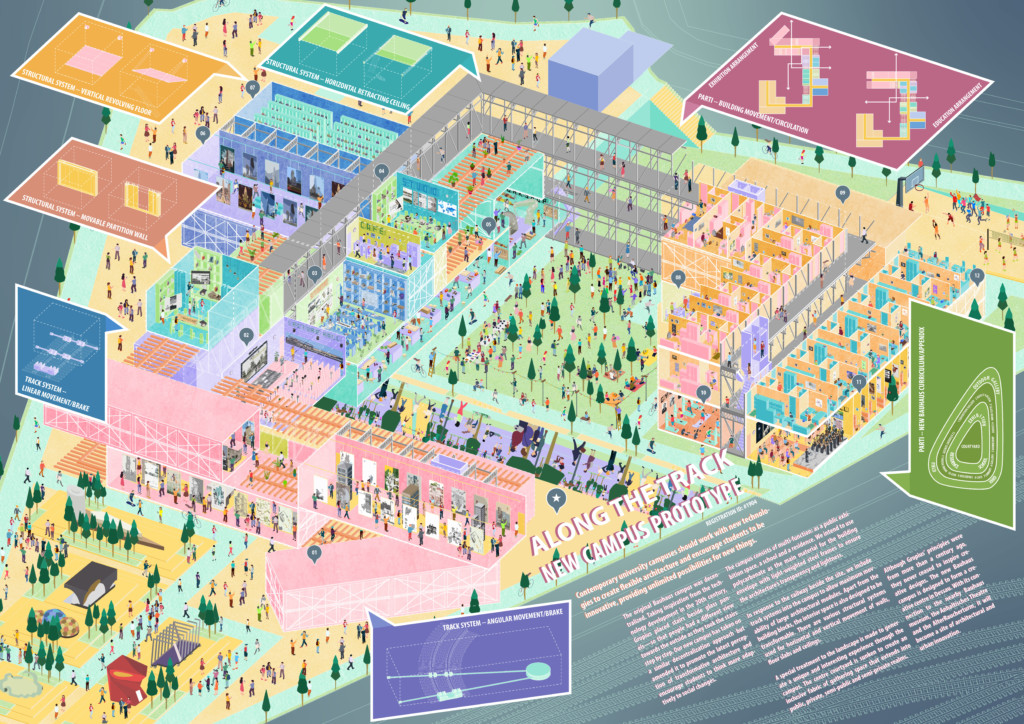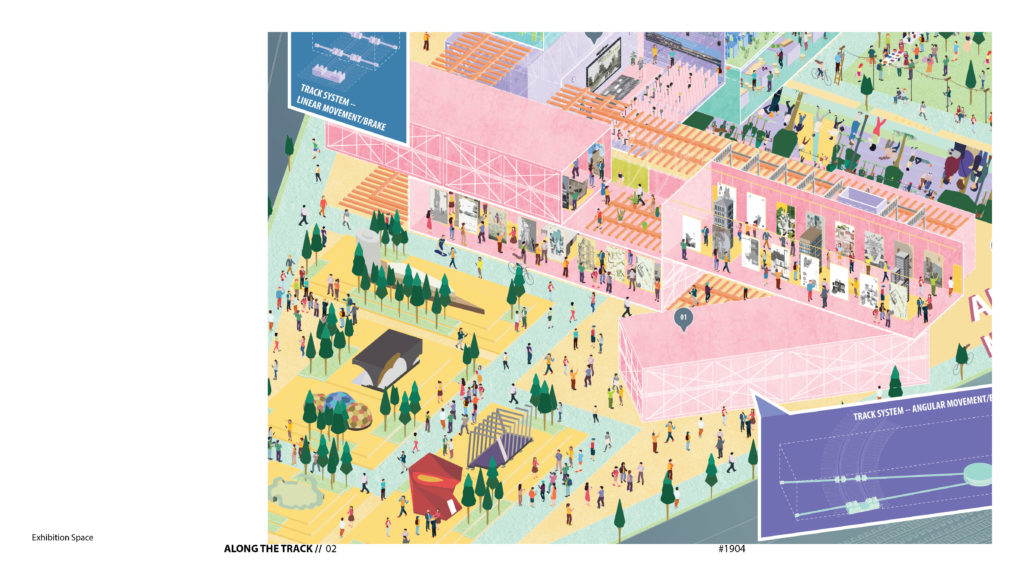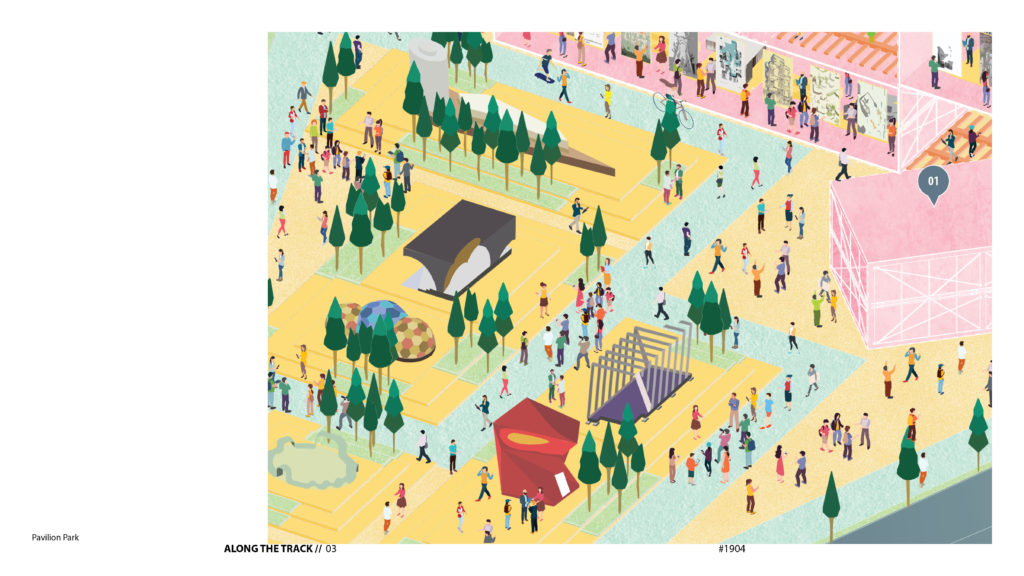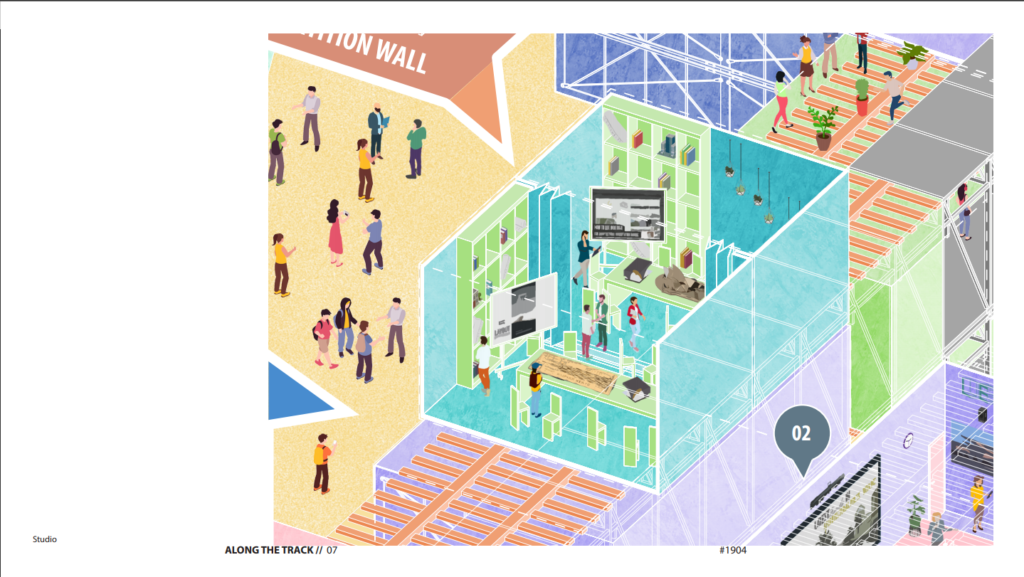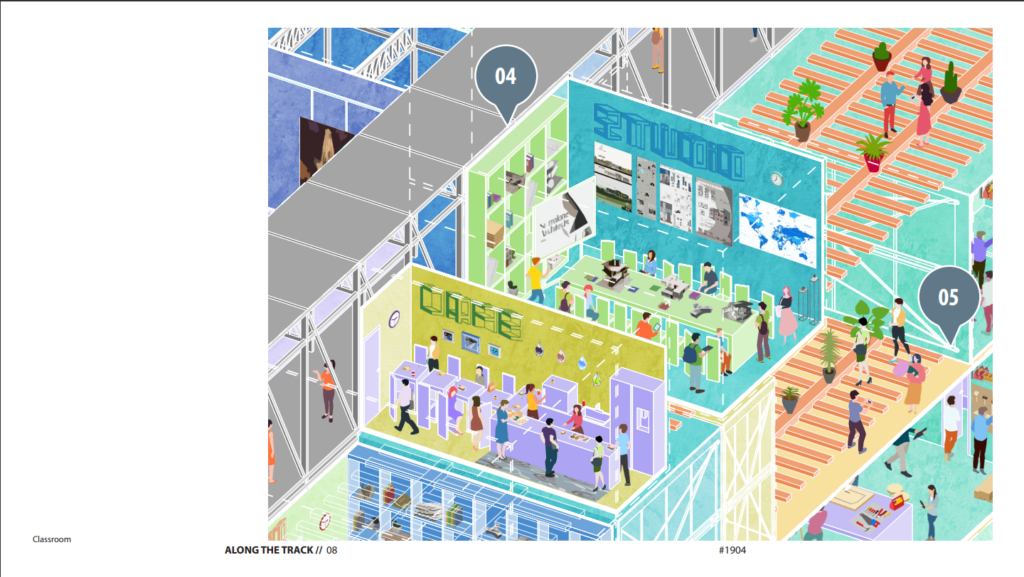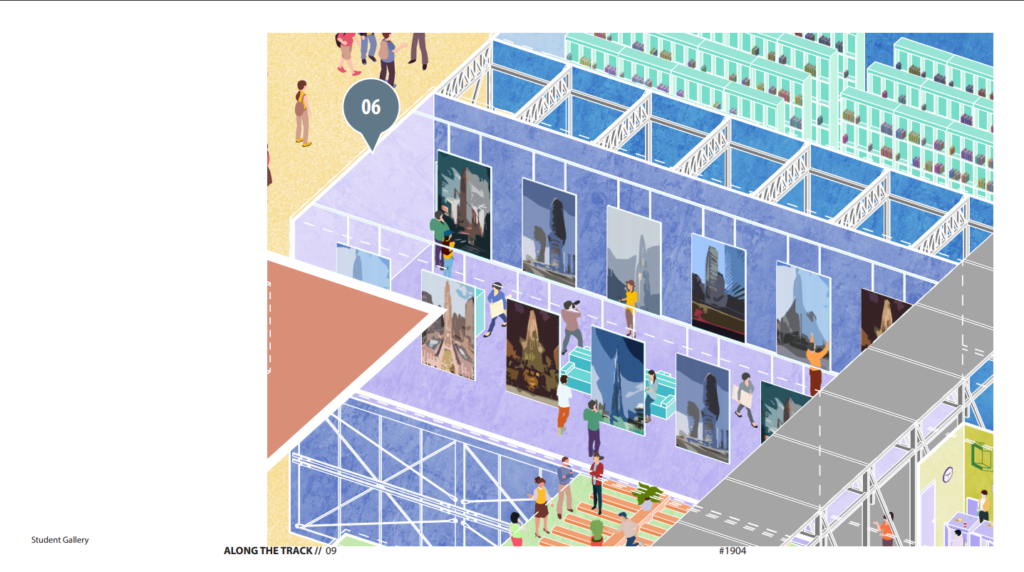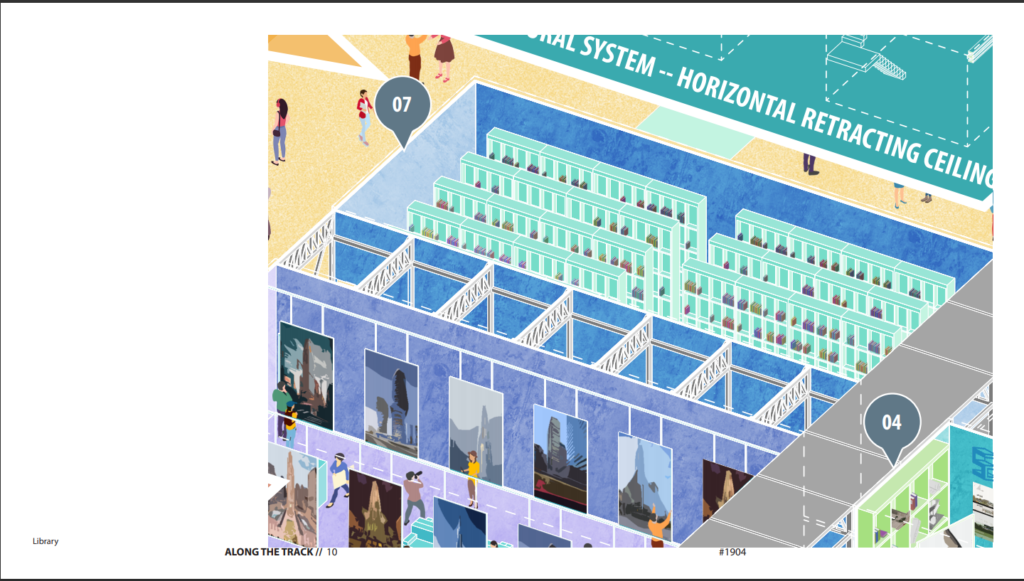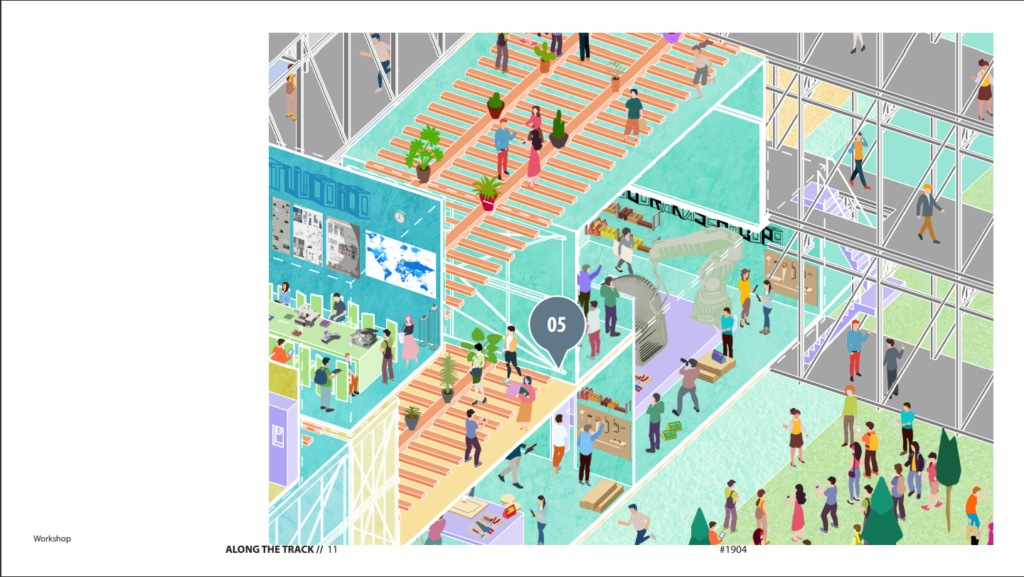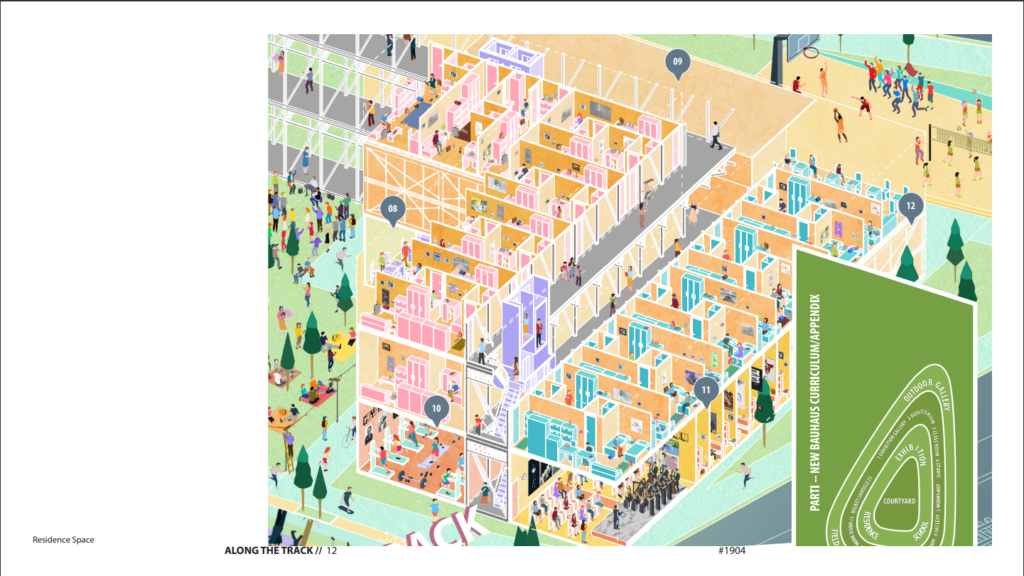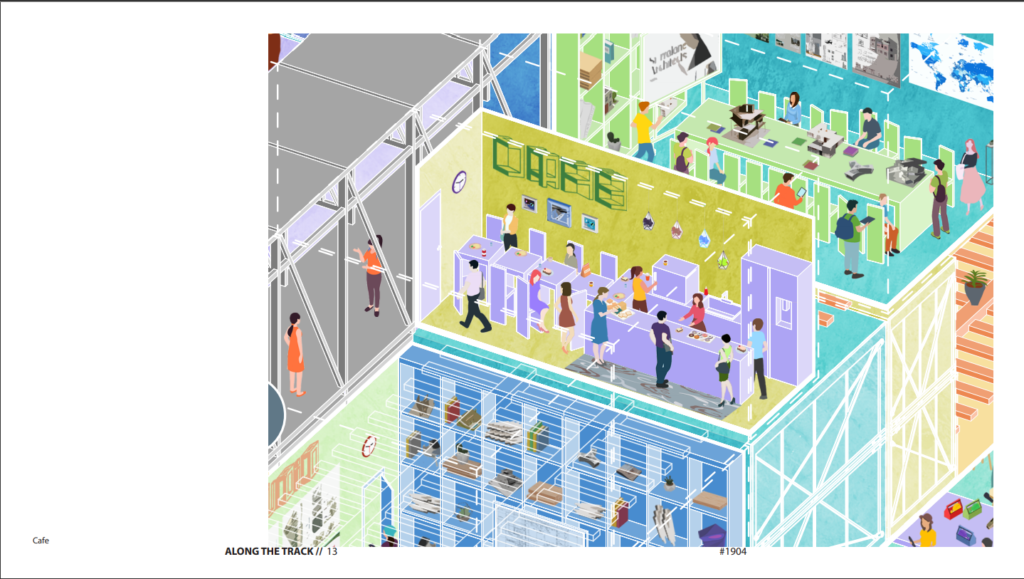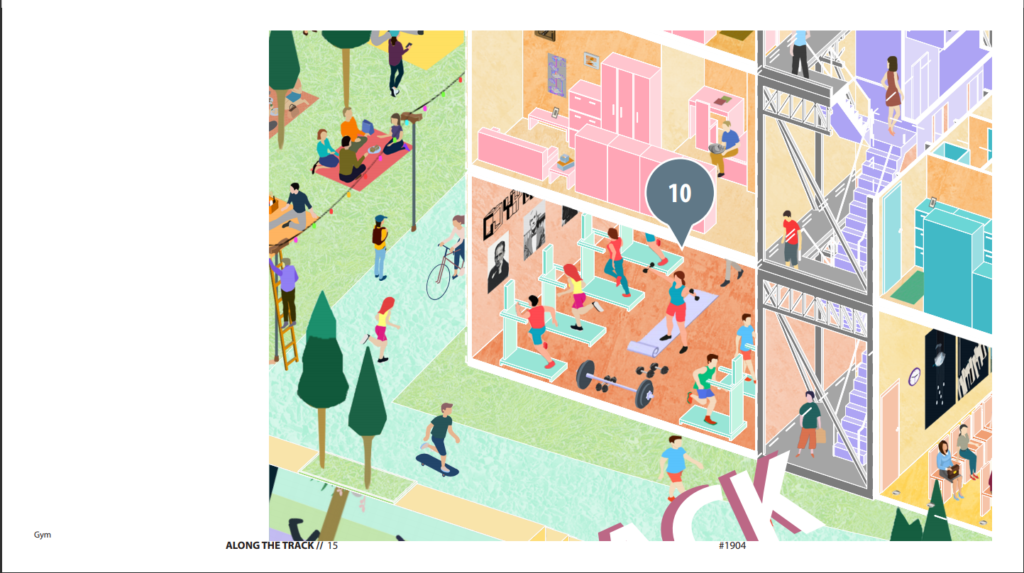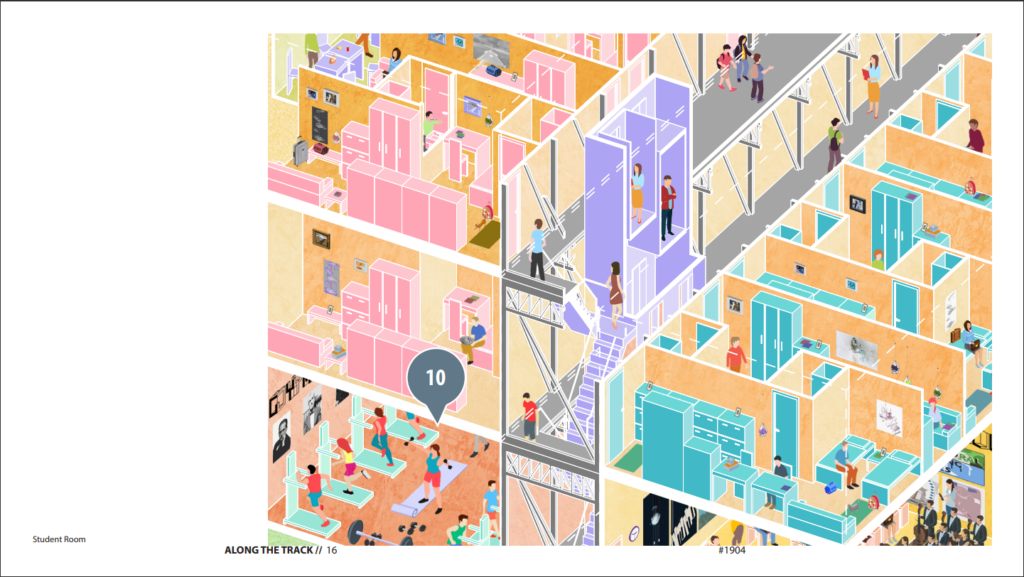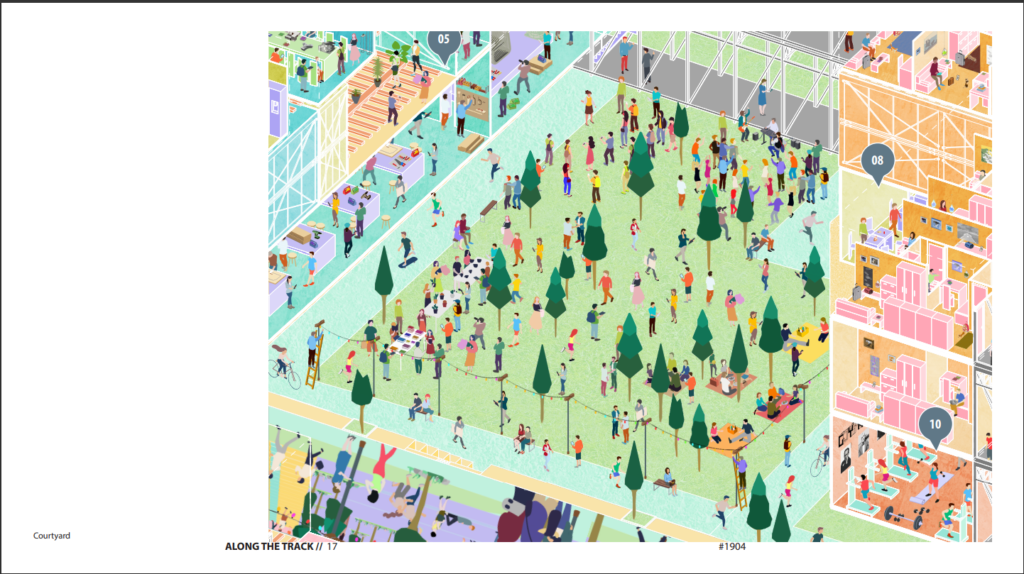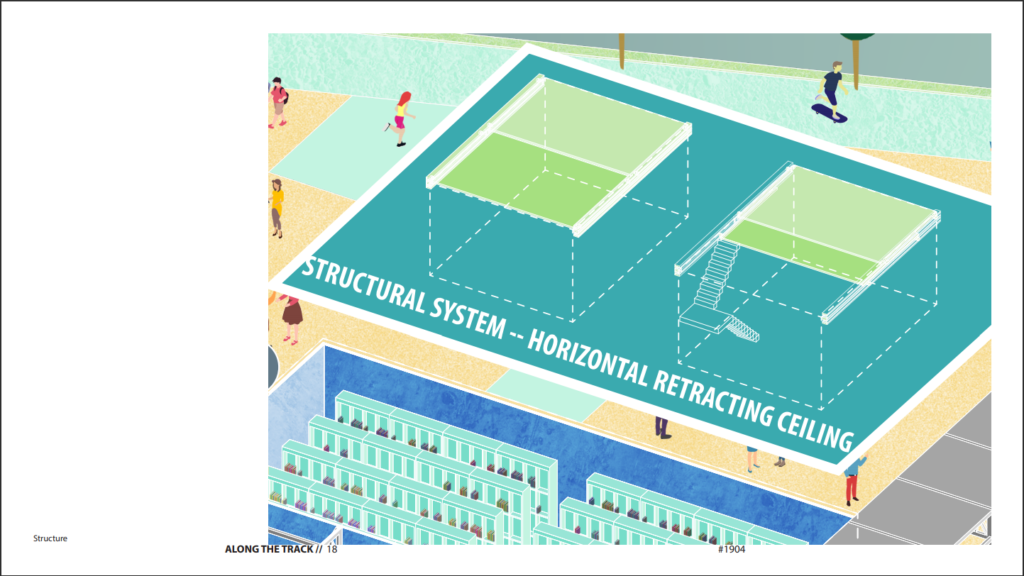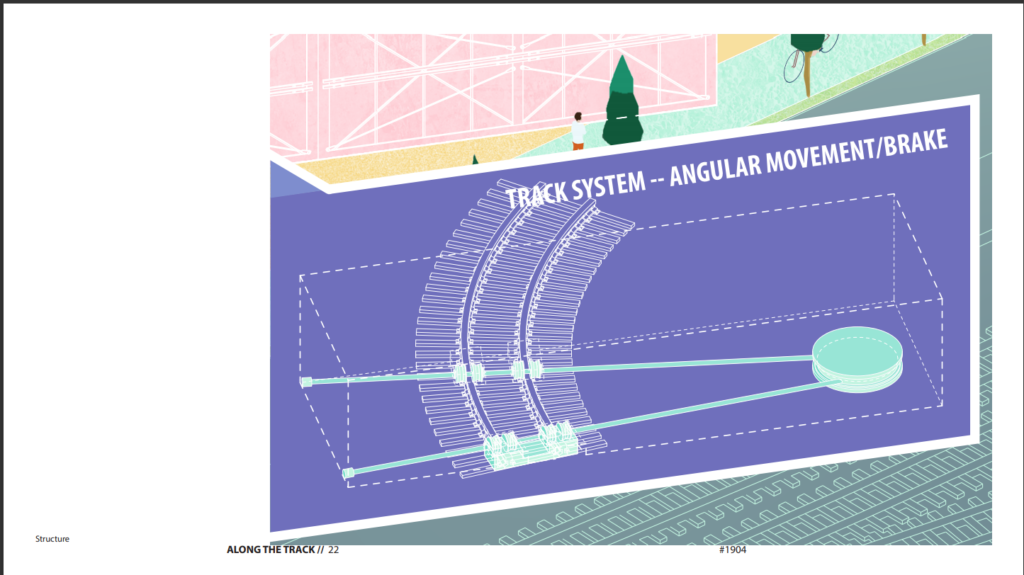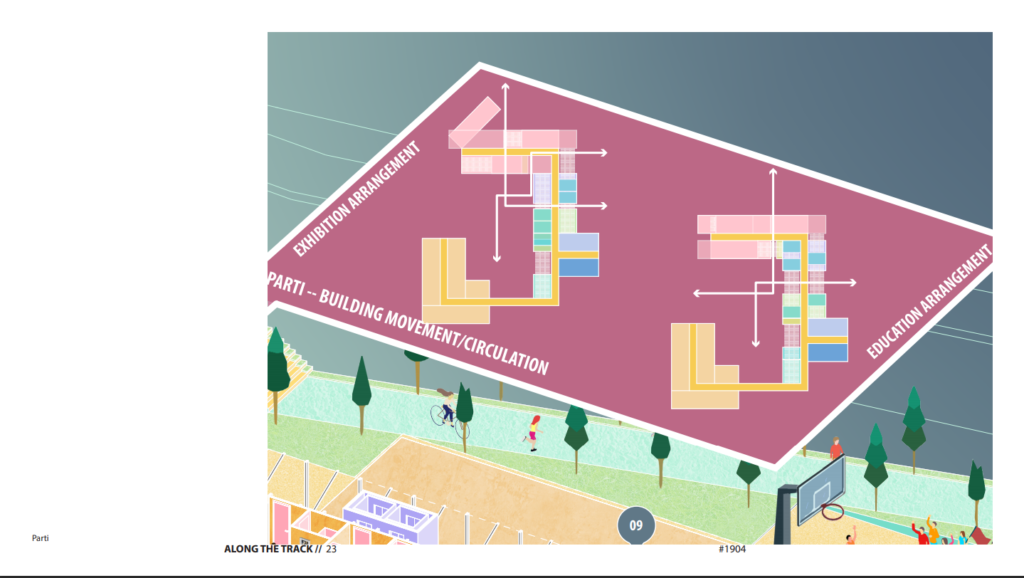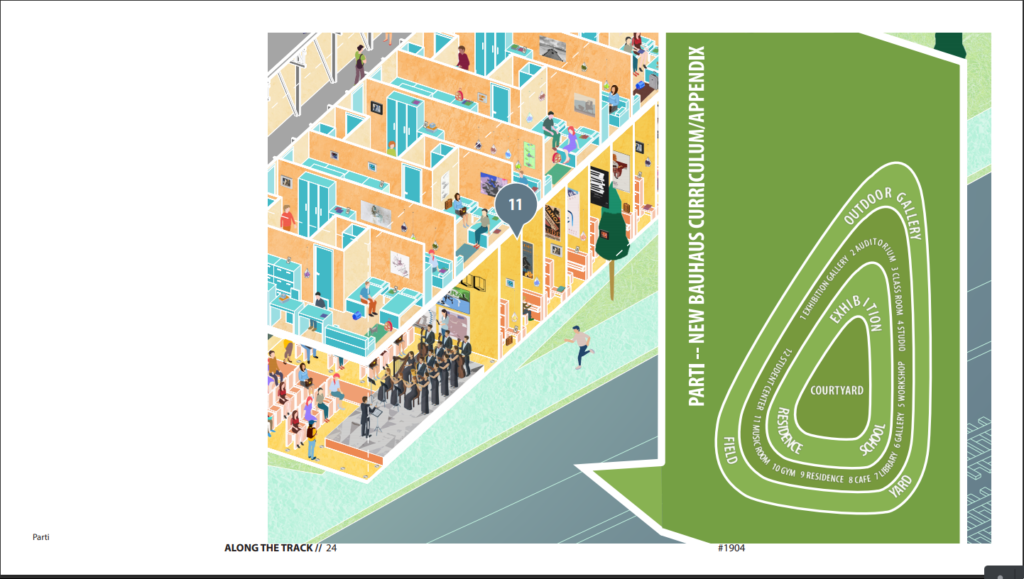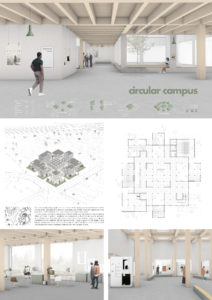Contemporary university campuses should work with new technologies to create flexible architecture and encourage students to be innovative, providing unlimited possibilities for new things.
The original Bauhaus campus was decentralized. Taking inspiration from the technology development in the 20th century, Gropius placed stairs beside glass panels—so that people had a different view towards the outside as they took the stairs step by step. Our new campus has taken on a similar decentralization approach but amended it to promote the latest perception of transformative architecture and encourage students to think more adaptively to social changes.
The campus consists of multi-function: as a public exhibition space, a school and a residence. We intend to use polycarbonate as the main material for the building envelope with light-weighted steel frames to ensure the architecture’s transparency and lightness.
In response to the railway beside the site, we include track systems into the campus to allow maximum movability of large architectural modules. Apart from the building blocks, the interior space is also designed to be transformable. There are various structural systems used for horizontal and vertical movement of walls, floor slabs and ceilings.
A special treatment to the landscape is made to generate a unique and interesting experience through the campus. The centre courtyard is sunken to create an inclusive fabric of gathering space that extends into public, private, semi-public and semi-private realms.
Although Gropius’ principles were from more than a century ago, they never ceased to inspire creative designs. The new Bauhaus campus is designed to form a creative centre in Dessau. With its connection to the nearby Bauhaus museum, the Anhaltisches Theatre and the AlterRaucherturm, it will become a site of architectural and urban innovation.
